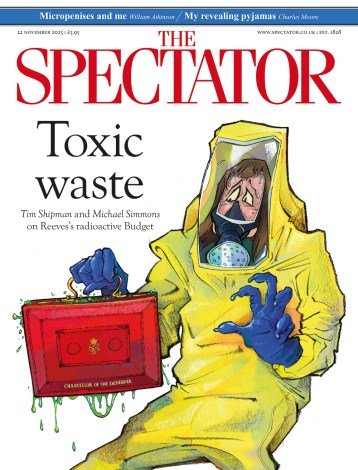
There are not many palazzi in Florence still occupied by their original families.
There are not many palazzi in Florence still occupied by their original families. Some, like the Medici, Pitti and Corsi-Horne, have become museums, while others, like the Ciofi-Giacometti — now the five-star Relais Santa Croce — have become hotels.
‘Make do and mend’ is a basic Florentine motto: why build a museum when you can convert an old palazzo, town hall (Palazzo Vecchio), magistrates offices (Uffizi), police station (Bargello) or granary (Orsanmichele)? Another guiding principle of the Florentine museum is do the absolute minimum to a building even if it means, as at Orsanmichele, that sole access is over a bridge from the palazzo opposite and thus only negotiable by appointment. A third rule of thumb is keep the tourists guessing by closing every museum on a different day. Navigating the museum system of Italy’s third most visited city is a challenge, unless you’re lucky enough — as a party of us were last summer — to be travelling under the aegis of the V&A. The names Victoria & Albert unlocked doors all over Florence — the only place they failed was Badia Fiorentina, where the priest was hearing confessions.
The trip was in preparation for the opening on 2 December of the V&A’s new £30 million Medieval & Renaissance Galleries. When the wrapping finally comes off the Cromwell Road frontage, 1,800 objects will have been redisplayed in ten dramatically revamped galleries over three floors. The redisplay will tell a continuous story from the fall of the Roman Empire to the Renaissance, and galleries will evoke the original settings in which objects would have been seen. While Florence’s palazzi now accommodate museums, the V&A’s East Wing will accommodate a palazzo.
A sharp right inside the main entrance will take you to the chronological start of the tour in the medieval galleries; a second right in the rotunda will bring you straight out into The Renaissance City. Manned by Giambologna’s ‘Samson Slaying a Philistine’, this entrance will open on to a Renaissance courtyard studded with coats of arms and dotted with statuary and fountains — a modern water feature compensating for the fact that Benedetto da Rovezzano’s Neptune fountain won’t be spouting. Overlooking the courtyard, a balcony from the Palazzo Pola, Treviso, will offer visitors a view from the Renaissance interior upstairs.
There’s been a lot of heavy lifting for this revamp, but two of the heaviest exhibits have stayed put: the early-17th century choir screen from ’s-Hertogenbosch in the Spanish Netherlands — one of various northern Renaissance incursions into southern territory — and the late-15th-century Santa Chiara chapel, a mini-homage to Brunelleschi’s Pazzi Chapel in Santa Croce. Beneath the choir screen, stairs lead up to the 16th-century Splendour and Society gallery, a Renaissance department store of high fashion and home furnishing, hung with one of Vasari’s ‘Ages of Man’ tapestries from the Palazzo Vecchio. Armour for the boys, platform shoes for the girls, an exquisite collection of Giambologna clay bozzetti for the aesthetes and, for the musicians, the Baffo Harpsichord made for the Strozzi family (who still live in their Florentine palazzo with a garden backing on to the Vasari Corridor).
A small room exploring the impact of trade — presided over by Gentile Bellini’s Sultan Mehmet II, on leave from the National Gallery — connects with a gallery of Renaissance Art and Ideas 1400–1550, containing a recreation of Piero de’ Medici’s studietto in the Palazzo Medici, complete with Luca della Robbia ceiling roundels. Renaissance ideas will be epitomised by Leonardo’s notebooks, on permanent exhibition for the first time; Renaissance art will be represented by, among other treasures, a rare wax model for one of Michelangelo’s marble slaves in the Accademia and Botticelli’s ‘Portrait of a Lady’: a pioneering exercise in three-quarter portraiture affording its subject a view of the Cromwell Road.
At the end of the gallery, an elaborately carved stone doorway from Federico da Montefeltro’s palazzo in Gubbio will form a grand entrance to the room devoted to Donatello and the Making of Art, where a ceiling from Casa Maffi in Cremona will provide a frescoed canopy for the sculptor’s ‘Ascension with Christ Giving the Keys to St Peter’ and Chellini Madonna.
With their mix of medieval and Renaissance and northern and southern, the V&A’s new galleries are a museological capriccio that may offend purists. You could argue that nothing brings the past more vividly to life than Giambologna’s thumbprint in the wet clay of his River God bozzetto, and that a South Ken museum can never recreate the sense of history you get in a place like Florence, where we passed scaffolding going up in Piazza Santa Croce for a game of 16th-century Calcio Fiorentino. Then again, Santa Croce wasn’t finished for five centuries, and the V&A’s galleries will be completed on schedule.





Comments